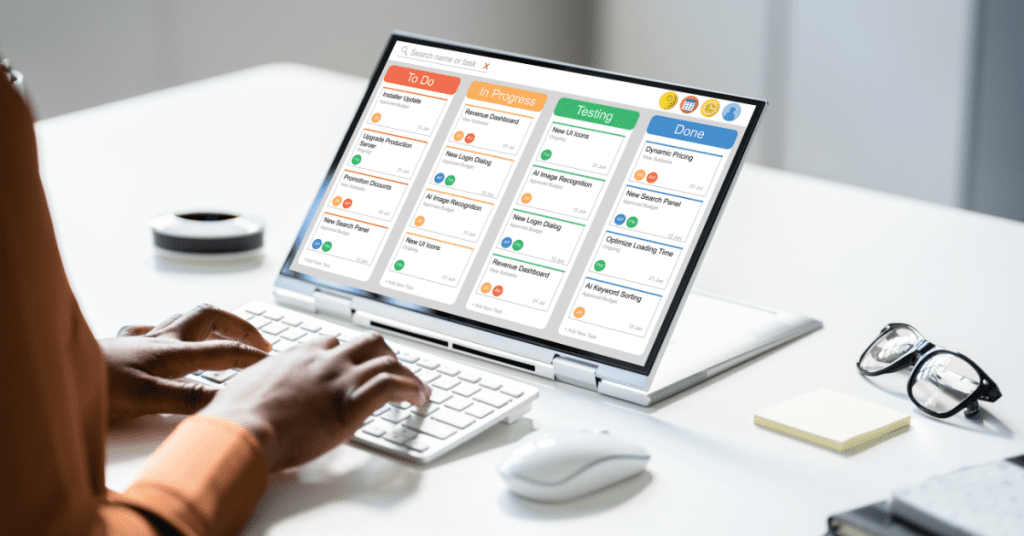Understanding the Core Principles of Software Quality Assurance
Industry Trends & Innovation
Read Time: 15 mins

Introduction to Software Quality Assurance (SQA)
Definition and Importance
SQA (Software Quality Assurance) is the practice of obtaining excellence in a software product. It involves various methodologies for the betterment of the development process with the aid of different tools and techniques. SQA testing follows rigorous standard practices to test the functionality, reliability, and other aspects of the software. It works right from the very beginning of a software life cycle to the deployment. The SQA, in short, acts as an insurance policy for the development team against potential problems and ensures high quality in the final product. Software quality assurance will ensure that the software not only works in support of the vision and intended roles but provides a smooth, dependable user experience through diligent oversight and proactive measures.Objectives of Software Quality Assurance
Software quality assurance consults on several key aspects to ensure software excellence:- Portability of Software: Portability is the characteristic of a software to be easily moved or adapted to other environments or platforms without major changes being made in it. This enables the software to function more effectively on many systems, hence providing greater versatility and accessibility.
- Usability of Software: It measures the extent of ease and intuition with which users can interact and navigate the application. High usability would then mean that users can easily do what they want to do without getting caught up in much confusion or frustration, leading to a great user experience.
- Software Reusability: Millions of software components or modules are designed to apply in several parts of a software system or in various software projects. This approach will, therefore, increase efficiency and decrease development time by making sure developers do not have to reinvent the wheel to attain productivity and maintainability.
- Correctness in Software: Correctness assures that the software will produce the correct results under certain predefined conditions or inputs. The correct software does what is expected of it: it is free of errors and does not behave once in a while unexpectedly; it meets all requirements and specifications laid down for it.
- Maintainability of Software: It shows how easily the software can be modified, updated, or extended with time. Well-maintained software will be structured and documented in such a way that changes can easily fit in according to requirements without the introduction of errors or impairment of stability by the developers.
- Error control: In software means to develop mechanisms for detecting, handling, and recovering from errors or unexpected situations gracefully. This would mean that good error control ensures that software is robust and reliable. It minimizes the effect of disruptions and hence provides a smoother user experience.
Key Components of Software Quality Assurance

Software Testing
Software testing happens to be an important function related to quality control, with the singular aim of discovering errors. Software quality assurance ensures that this testing is planned in detail and executed effectively to produce high-quality software. Software quality assurance’s mission is to ensure that every testing activity going on within its goals has the objective of rendering bug-free and reliable software.Verification and Validation
Technical reviews are thus an assurance and quality control measure done by software engineers for software engineers, with more emphasis on the detection of errors and their correction. While an audit is a form of review that needs software quality assurance performing solely at an organization, audits ensure that, during all phases of software engineering, this quality standard should be adhered to so as to uphold high standards and best practice compliance.Process and Product Quality Assurance
While quality control is concerned with the final product, software quality assurance addresses the processes by which that product is made. Key aspects include: Process Standardization: Development and adherence to standardized procedures to reduce variation and increase predictability. Process evaluation and improvement: Continually checking how efficiently and effectively processes are working by using frameworks and standards, such as CMMI and ISO 9001, as enablers of continuous process improvements.SQA Management
This involves a comprehensive array of activities focused on upholding and improving software quality. Key elements include:- Leadership Engagement: Securing the commitment and understanding of the organization’s leadership to champion and support quality initiatives.
- Resource Management: Strategically allocating and managing resources to uphold and enhance quality standards consistently.
- Risk Management: Proactively identifying, assessing, and mitigating potential risks that could jeopardize software quality.
Software Quality Assurance Processes and Methodologies

Waterfall Model
In a classic software development life cycle, the process unfolds through six sequential phases:- Planning: Establishing the project's scope, objectives, and feasibility.
- Analysis: Gathering and analyzing requirements to ensure a clear understanding of what the software needs to accomplish.
- Design: Crafting the architecture and detailed design of the software based on the requirements.
- Implementation: Writing and compiling the actual code that brings the design to life.
- Testing: Rigorously evaluating the software to identify and fix any bugs or issues.
- Maintenance: Ongoing support and updates to ensure the software continues to function well and meet user needs.
Agile Methodologies
It cycles the development process into bite-sized portions with regular reviews. As opposed to the traditional Waterfall model, this is a process that allows testers and developers at almost every stage to work concurrently on a project. This parallel workflow enables continuous collaboration and ensures that issues are addressed in good timing, hence making the development process and software quality assurance process more dynamic and efficient.DevOps and Continuous Integration
DevOps evolves from the principles brought forward by Agile and accentuates continuous and strong collaboration between Developers, Software quality assurance, and other departments. All members of a team are actively involved in the process from start to finish. It requires constant communication in order to develop new products and review existing ones; this would guarantee a seamless, efficient workflow that fosters innovation and improvement.Test-Driven Development (TDD)
Test-Driven Development is a development technique where you start with the writing of a test with a view to failure. Then you develop the code required to pass that test and clean up the code. Such a cycle is repeated for every new feature or change. Unlike other methods, where all of the code has been written at one time or all tests, TDD melds writing tests and code into one holistic process. TDD is a software development process sanctioned by test writing before the actualization of features. In this approach, it goes ahead to enforce short cycles, which are repetitive in development to guarantee quality and correctness throughout the development cycle.Software Quality Assurance: Types of Software Testing

Software Quality Assurance: Unit Testing
Unit tests during the software quality assurance process operate at a very granular level, focusing on the core of an application. They involve testing individual methods and functions within the classes, components, or modules that make up your software. Unit tests are typically inexpensive to automate and can be executed swiftly by a continuous integration server, making them an efficient tool for maintaining code quality and catching bugs early in the development process.Software Quality Assurance: Integration Testing
Integration tests during software quality assurance ensure that various modules or services within your application function seamlessly together. For instance, they might verify the interaction with a database or confirm that microservices operate in harmony as intended. These tests are generally more costly to execute because they necessitate having multiple components of the application up and running simultaneously. However, their value in catching issues that arise from the integration of different parts makes them indispensable in the testing process.Software Quality Assurance: System Testing
System tests assess how an application performs under specific workloads, providing insights into its reliability, speed, scalability, and responsiveness. For example, these tests might measure response times when handling a large number of requests or evaluate the system's behavior with substantial data volumes. They help determine whether the application meets performance criteria, identify bottlenecks, and gauge stability during peak traffic. System tests are crucial for ensuring that the application can handle real-world demands and maintain optimal performance under various conditions.Software Quality Assurance: Acceptance Testing
Acceptance tests are formal evaluations designed to verify whether a system meets business requirements. These tests necessitate the entire application being operational and focus on mimicking user behaviors to ensure functionality aligns with user expectations. Additionally, acceptance tests can delve deeper by assessing the system's performance, rejecting changes if specific benchmarks are not achievedSoftware Quality Assurance: Regression Testing
Regression testing is a crucial practice that ensures recent code changes haven't adversely affected existing functionality. As software evolves and undergoes updates, regression tests are run to catch any unintended errors and verify that everything that previously worked still operates smoothly. Especially in large projects with numerous interconnected components, automation tools are invaluable, enabling efficient and thorough regression testing to maintain the integrity of the software and prevent disruptions.Software Quality Assurance: Performance Testing
Performance testing is meant to test the system for certain workloads so as to determine the system's reliability, speed, scalability, and responsiveness. This can include time for execution of systems while serving many requests or performance with large datasets. Performance testing is carried out to ensure that an application has reached its performance benchmarks, find bottlenecks in applications, examine the stability of apps under peak traffic, etc. Real-world conditions are simulated against the app in such tests to ensure it works optimally under all conditions for a seamless user experience.Software Quality Assurance: Security Testing
QA security testing is the proper procedure to secure the software applications from any nasty attack by identifying whether the vulnerability is present or not. It comprises the vigorous testing of security features in order to dig out the loophole that might be exploited by hackers. Penetration testing, code reviews, and much more such techniques are used for testing the ability of software applications to stand firm against any security threat. In this regard, proper security testing is essential for strict measures to be put in place to protect sensitive information and thus maintain the trust of users. It will, in fact, protect digital assets from unlawful access and data breaches while assuring the integrity, confidentiality, and availability of systems.Tools and Technologies for Software Quality Assurance

Automated Testing Tools
Automatic testing is a method that exploits software tools for the execution of tests on applications with the aim of detecting errors, defects, and mismatches in functionality. There are several test types in this approach:- Unit Testing: This is basically focused on testing individual units or components of software applications.
- Integration Testing: Testing of combined parts of an application to ensure smooth interaction among them.
- System Testing: This is the testing of a whole integrated software product for verification of its presence in compliance with specified requirements.
Test Management Tools
These tools are essential for organizing and managing the testing process, encompassing test case creation, execution, tracking, and reporting. They play a vital role in maintaining documentation and ensuring that all testing phases are systematically executed.- TestRail: This tool offers comprehensive test case management, allowing teams to organize their testing efforts efficiently and gain real-time insights into testing activities.
- Quality Center/ALM (Application Lifecycle Management): Developed by Micro Focus, this robust tool supports a wide range of testing needs, including test management, automation, defect tracking, and more, from requirements gathering to deployment.
- Zephyr: Seamlessly integrates with Jira and other DevOps tools, managing all aspects of the testing lifecycle to ensure a cohesive and streamlined testing process.
Continuous Integration Tools
CI/CD is a methodology that incorporates automation into the stages of app development to enable frequent and reliable delivery of applications to customers. The core principles of CI/CD include continuous integration, continuous delivery, and continuous deployment. This approach aims to:- Mitigate risks in software development by ensuring consistent and automated testing.
- Guarantee reliable releases of software at any time, enhancing deployment flexibility.
- Enable developers to swiftly detect and pinpoint errors, facilitating quicker fixes and improved software quality.
Best Practices in Software Quality Assurance

Software Quality Assurance: Code Reviews and Pair Programming
Pair programming and code review do not exclude each other; they can surely complement each other to boost the development process tremendously. Again, depending on your goals and taste, there are ways by which you could effectively incorporate these two techniques. For example, you do pair programming on assignments in which collaboration and creativity are high, while anywhere verification and validation are stronger than others, code reviews work best. You could also practice pairing to get an initial draft of your code, then do code reviews in order to cast the final version before merging it. Moreover, pair programming excels at sharing knowledge and skills among the members, whereas code reviews safeguard uniformity and quality within the team. Incorporating these practices together may significantly enhance the efficiency and coherence of the development workflow.Software Quality Assurance: Test Automation
A software quality assurance testing strategy should incorporate both automated and manual testing to ensure comprehensive coverage. It's essential to choose the most suitable type of test for each aspect and phase of the product. Manual testing enables businesses to explore a broad array of conditions and scenarios, providing invaluable insights into the app's experience and feel from the testers' perspective. Manual testing is particularly beneficial for exploratory testing, usability testing, and ad hoc testing. Testers should ideally conduct manual tests that reflect diverse end-user profiles, utilizing a variety of devices and operating systems. This approach ensures that the app performs well across different environments and meets the needs of all users.Software Quality Assurance: Risk-Based Testing
Risk-based testing is a strategic approach that focuses on the parts of an application most likely to fail and cause significant impact. By targeting these critical areas early in the testing cycle, it ensures that testing efforts are concentrated where they are most needed. The key Components of Risk-Based Testing during software quality assurance are:- Identification of Risks: Identifying potential issues and vulnerabilities within the application.
- Analysis and Prioritization: Assessing the likelihood and impact of these risks to determine their priority.
- Mitigation through Testing: Designing and executing tests specifically aimed at addressing and mitigating the highest priority risks.
Common Challenges in Software Quality Assurance
Achieving a Balance Between Speed and Quality
In fast-paced projects, speed and quality must go hand in hand, as compromising product quality is not an option. By assigning a large team with sufficient resources to meticulously run test cases and examine all possible scenarios, you can achieve a swift yet thorough process. It's crucial to work quickly but diligently, ensuring no important scenarios are overlooked to prevent any quality gaps in the final deliverable. This approach guarantees that even under tight deadlines, the output remains top-notch due to balanced software quality assurance.Managing Changing Requirements
Some clients are so particular that they frequently change requirements after reviewing module deliveries. These new changes demand additional time for implementation and testing, often impacting the delivery schedule. Moreover, these alterations can sometimes be confusing, leading developers to create something entirely different from what was intended. The best approach is to treat these changes as enhancements and address them after the project delivery to avoid any confusion and ensure clarity. This way, the project stays on track, and any additional features can be seamlessly integrated later. Resource Limitation and Skill Gaps Professional differences between development and testing teams are still prevalent. Developers often view testing as merely the final step in the software development life cycle, believing testers only need a list of user journeys and technical requirements. However, testers can struggle to identify flaws in the code if they aren't familiar with the development process. Without a deep understanding of how the software operates, creating comprehensive test cases to uncover all potential bugs becomes challenging. Bridging this knowledge gap is essential for effective testing and overall software quality. An understaffed software quality assurance can struggle to achieve the desired quality standards due to insufficient manpower. This pressure on limited resources can be overwhelming, leading to inadequate testing of the software’s functionalities. Consequently, the end result is a product whose quality cannot be reliably assured to the end users, compromising user satisfaction and trust.Conclusion
By understanding and implementing software quality assurance best practices you can ensure your software meets the highest standards of excellence. Overcoming common challenges such as balancing speed and quality, managing changing requirements, and bridging skill gaps between development and testing teams is crucial for maintaining product integrity and user satisfaction.Are you looking for top-tier developers and IT specialists to enhance your projects, including expert SQA services? ParallelStaff is here to help. Our team of professionals is ready to support your project needs, ensuring high-quality outcomes and seamless integration of quality assurance practices. Contact us now to learn more!
